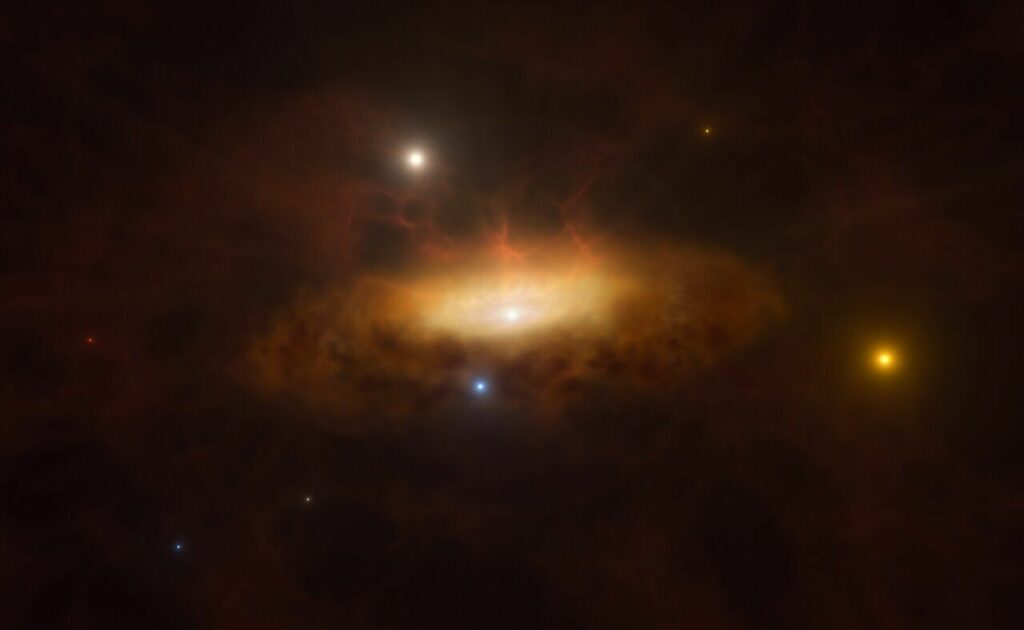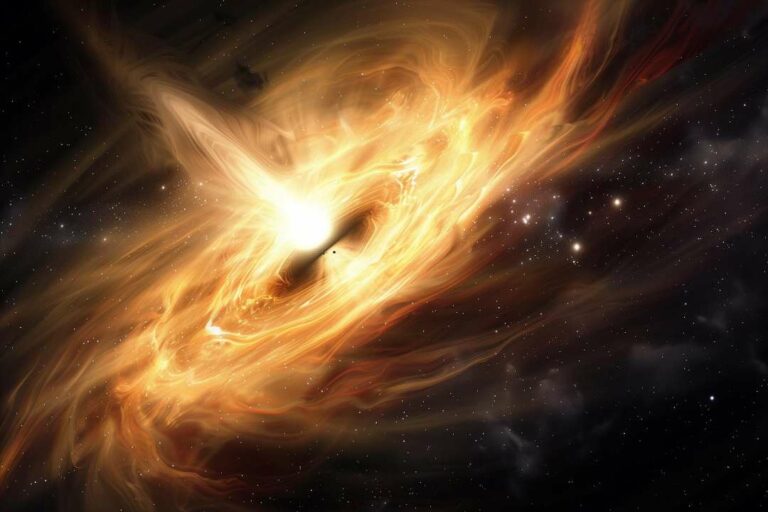Astronomers Witness a Massive Black Hole Awaken in Real Time
As observed, the previously inactive galaxy SDSS1335+0728 started emitting light much brighter than before as observed in late 2019. To find out the root, the astronomers used data received from various space and ground-based observatories, including the ESO’s VLT to study how the brightness of the galaxy changed. Yet in a study published today they ascertain it is unprecedented in a galaxy and probably this is the result of a massive black hole at its nucleus suddenly ‘waking up’.
“It is like watching a galaxy tens of millions of light years away for years and suddenly it is perfectly calm and does not do anything,” says Paula Sánchez Sáez, an astronomer at ESO in Germany and the author of the study that has been accepted for publication in Astronomy & Astrophysics. “Finally, its core is shown to experience very large brightness fluctuations which cannot be regarded as normal events. ”
This is true for SDSS1335+0728 which has been recently classified as an AGN source given that it greatly increased its luminosity in December of 2019.
Galaxies can temporarily ‘blink’ if a supernova occurs, or if a star is devoured by a black hole causing it to disintegrate and then millions of degrees will cause it to brighten up. But these kinds of event usually last for a few dozen to several hundred days. Notably, SDSS1335+0728 has been observed to increase in brightness to this date, four years after its ‘switch on’ This is unusual because the galaxy sighted 300 million light-years away in the Virgo constellation does not exhibit normal light variations as can be observed in other galaxies.
For more details, the team when they researched used the data gathered from both the past and recent surveys together with the X-shooter instrument on ESO’s VLT situated in the Atacama Desert in Chile. They compared the data collected before December 2019 and after December 2019 and found that, SDSS1335+0728 is now much brighter at ultraviolet, optical, and near-infrared wavelengths and X-ray emissions will start in February 2024.

“It is quite bizarre,” said Paula Sánchez Sáez who is affiliated with the Millennium Institute in Astrophysics in Chile (MAS).
The most likely scenario is that the observations are showing signs of activity at the core of the galaxy, says García, of MAS and the University of Valparaíso in Chile, who co-authored the study. “If this is so, this will be the first time that we get to see the aggressive black hole switch on at real time. ”
Super-massive black holes that are known to weigh more than 100,000 times equivalent of the sun are located at the center of most galaxies including the Milky Way galaxy.
“These gigantic entities are normally inactive and hidden”, pointed out co-author Claudio Ricci of the Diego Portales University in Chile. “As for SDSS1335+0728, we got a chance to watch the black hole waking up and started to feed on the gas present near it making it incredibly luminous. ”
“This process (…) has never been directly observed before,” explains Hernández García. While other studies have observed other inactive galaxies becoming active after severally observing them for several years, this has been observed in real time. “This could also happen to Sgr A*, the massive black hole at the center of our own galaxy,” adds Ricci, who works at the Kavli Institute for Astronomy and Astrophysics at Peking University in China, though the likelihood of this occurring is unclear.
A similarly conclusion to the latter activity means further observations are required in order to eliminate rival hypotheses. It could simply be that it is taking a significantly longer time than average for a tidal disruption event or maybe a totally different form of event. In case it is a tidal disruption, it would have been the longest and the least luminous tidal disruption event ever.
‘Even if these changes are due to a number of factors, this [galaxy] is a great example of how black holes develop,’ added Sánchez Sáez. “Facilities such as the MUSE on the VLT or those in the future ELT will be instrumental in finding out [why the galaxy is brightening]. ”
This research is described in a paper is entitled “SDSS1335+0728: The awakening of a ∼ 10^6M⊙ black hole” in Astronomy & Astrophysics.
Reference: P. S’anchez-‘aez et. al, SDSS1335+0728: The awakening of a ∼ 106M⊙ black hole, Astronomy & Astrophysics (2024). DOI: 10.1051/0004-6361/202347957
Do not forget to share your opinion with us to provide you with the best posts !




0 Comments